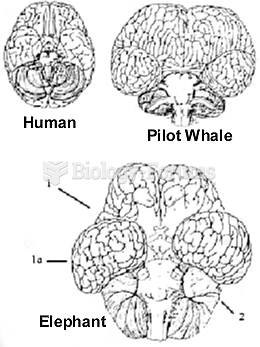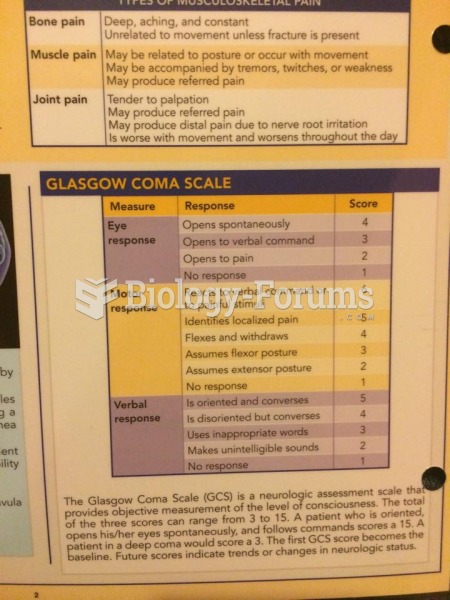This topic contains a solution. Click here to go to the answer
|
|
|
Did you know?
Urine turns bright yellow if larger than normal amounts of certain substances are consumed; one of these substances is asparagus.
Did you know?
Fungal nail infections account for up to 30% of all skin infections. They affect 5% of the general population—mostly people over the age of 70.
Did you know?
Warfarin was developed as a consequence of the study of a strange bleeding disorder that suddenly occurred in cattle on the northern prairies of the United States in the early 1900s.
Did you know?
The U.S. Pharmacopeia Medication Errors Reporting Program states that approximately 50% of all medication errors involve insulin.
Did you know?
The ratio of hydrogen atoms to oxygen in water (H2O) is 2:1.
 Human, pilot whale and elephant brains up to scale. (1)-cerebrum (1a)-temporal lobe and (2)-cerebell
Human, pilot whale and elephant brains up to scale. (1)-cerebrum (1a)-temporal lobe and (2)-cerebell
 James Madison was a key figure at the Constitutional Convention of 1787 in Philadelphia. He not only
James Madison was a key figure at the Constitutional Convention of 1787 in Philadelphia. He not only
 Standing at the side and facing the head, apply shingles effleurage to paraspinal muscles of the ...
Standing at the side and facing the head, apply shingles effleurage to paraspinal muscles of the ...




